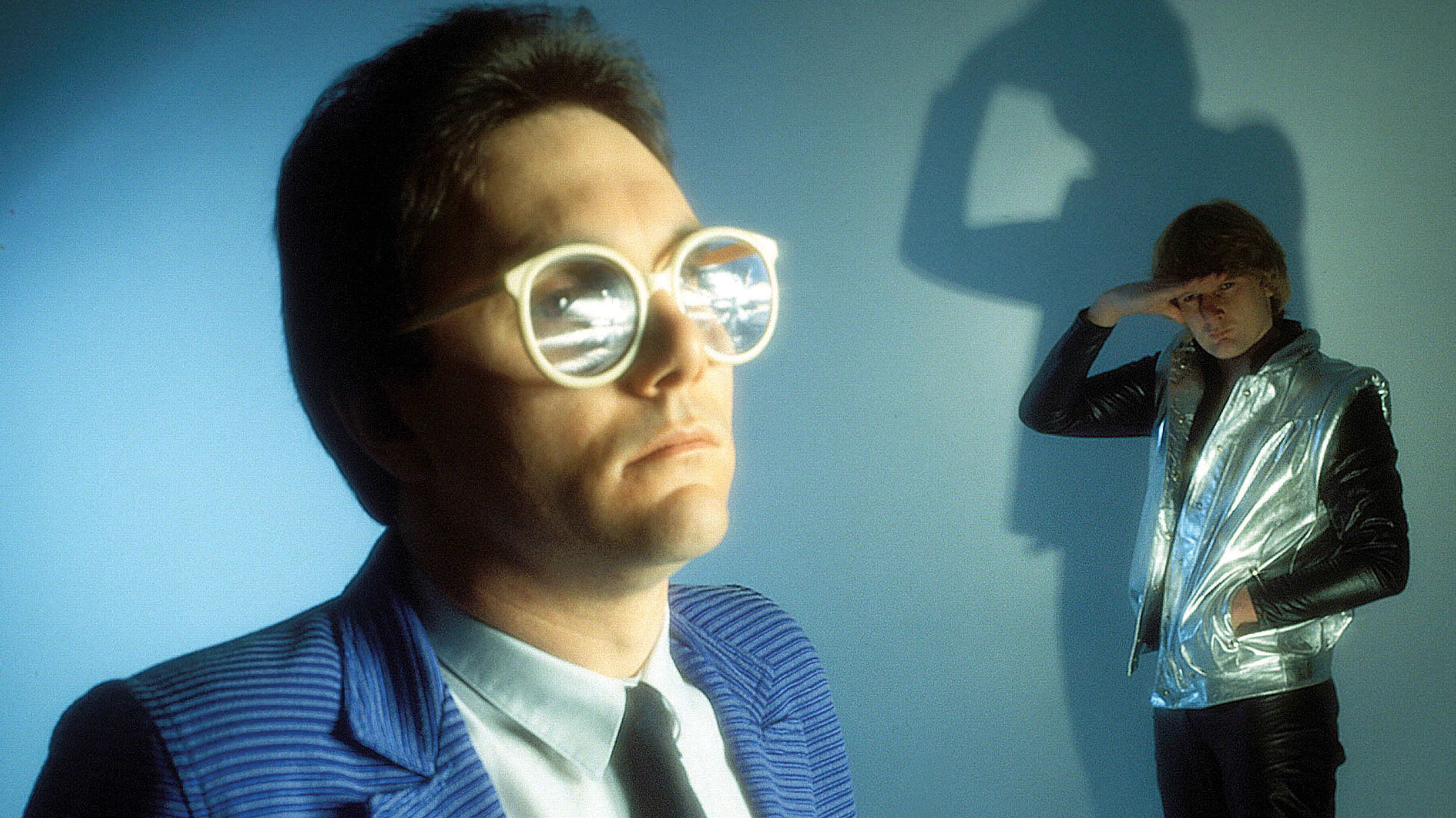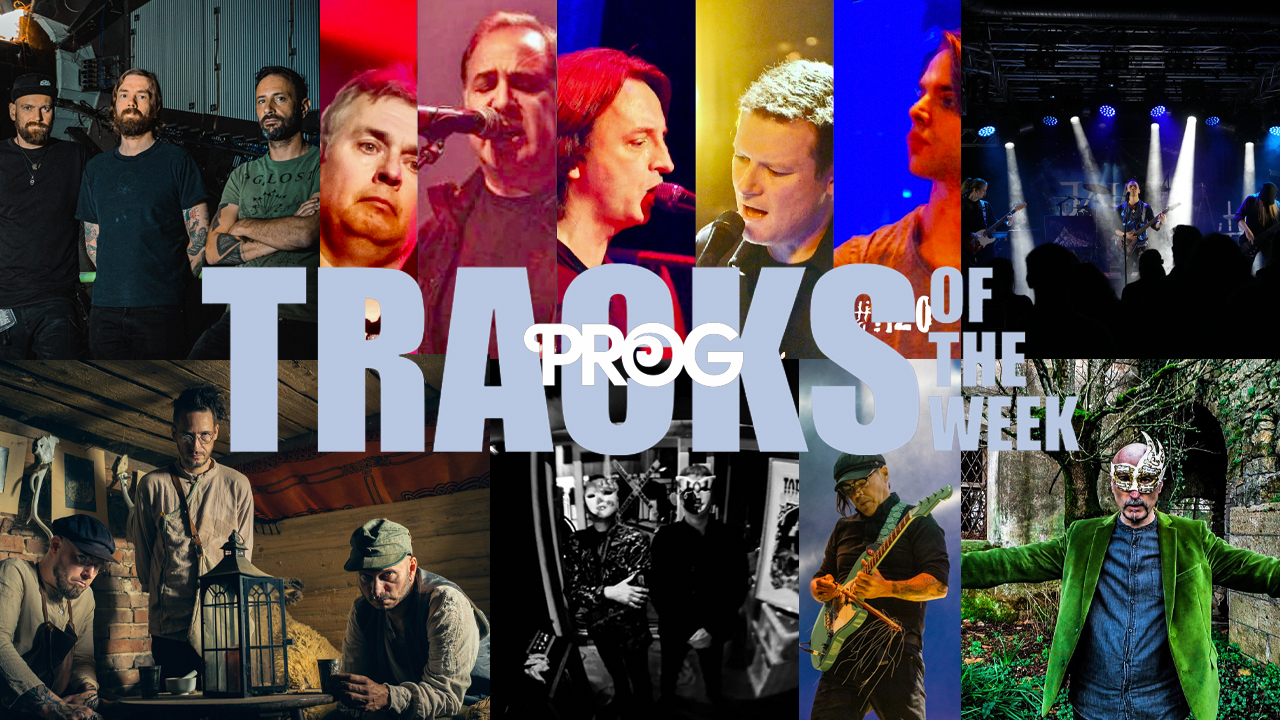“The bassist’s kids were waiting with autograph books because we were pop stars. But some of the fans were pissed off. I would have been too!” This duo were never meant to be a real band, but their hit single had a massive impact on prog
When an experimental project escaped from the studio in 1980, no one could have predicted the consequences for both prog and pop music – and not everyone was happy about it

Best known for 1980 global pop hit Video Killed The Radio Star, Buggles – Geoff Downes and Trevor Horn – had always been prog fans. When their acclaim led to an invitation to join Yes, they jumped at it, and the prog world was changed beyond recognition. After receiving the Outer Limits Award at the 2016 Prog Awards, the duo discussed how much of the genre had always been in their work.
Buggles were the result of a science experiment designed to fuse prog at its most complex and cerebral with pop at its most artful and intelligent. No wonder the duo of Geoff Downes and Trevor Horn went on to join Yes for their 1980 album Drama and the subsequent tour, while Horn would produce 1983’s 90125 and 1987’s Big Generator. It’s hardly surprising, either, that 10cc’s 1974 album Sheet Music is one of Horn’s favourites, and that 10cc guitarist and songwriter Lol Creme remains a close associate.
Buggles might be best known for the naggingly infectious near-novelty hit Video Killed The Radio Star – a No.1 around the world in 1979 – but they also released two very clever and near-conceptual long-players in 1980’s The Age Of Plastic and 1981’s Adventures In Modern Recording, which prove there was a lot more to them than chart fodder.
Their music had a tricksiness and far-sighted sense of visionary wonder typical of true prog fans. It also evinced a high-gloss sheen and the sort of mad studio skills you’d expect of someone whose productions for ABC, Dollar, Malcolm McLaren and the ZTT label – home of Frankie Goes To Hollywood, Art Of Noise and Propaganda – led to him being dubbed ‘the man who invented the 80s.’
Horn and Downes receive the Outer Limits gong at the 2016 Progressive Music Awards. Horn laughs: “I suppose I have skirted around prog,” when asked about his musical career.
Both certainly have full prog CVs: Downes has been a member both Yes and Asia, while Horn first saw Yes in 1975, at De Montfort Hall in Leicester, on their Yesterdays tour. He calls that time “the golden era of prog,” adding: "I liked lots of other prog, like Caravan and Genesis – although never as much as Yes because the rhythm section was never as interesting. I’d never heard anything like them before and I’ve not heard anything like them since.”
For Downes, Buggles were equal parts prog and pop. “What amazes me is the amount of detail we put into those recordings,” he says. “We’d stay up all night, experimenting in the studio. It was progressive pop, I guess.”
Sign up below to get the latest from Prog, plus exclusive special offers, direct to your inbox!
He considers the duo’s antecedents ito have been 10cc and ELO. “Though they were known as pop bands, they had lots of progressive ideas,” he argues. “Those early 10cc records were pretty out there, and Godley & Creme took that even further. Even ABBA had sections in their music that were quite intricate. We loved all that studio trickery and experimentation. Parallel to that were bands like Yes, who were experimenting in the studio in a more progressive rock format.”
So did Buggles provide the bridge between 70s prog and 80s pop? “I think so,” Downes says, while accepting that, for some, Buggles were a pop step too far. “Obviously when we first joined Yes there was a huge outcry from the diehard fans at the idea of a couple of interlopers from the pop world stepping into this revered band. But in hindsight, both myself and Trevor were musicians, not pop guys. We were very much into Yes and progressive music. It’s just that our opportunity came to make pop music and we took it.”
Leeds College Of Music graduate Downes was a former member of obscure rockers She’s French, and a session musician and composer of advertising jingles when he met the Durham-born Horn via an advert at the back of Melody Maker. “He was putting together a live band for Tina Charles [pop-disco diva whose single I Love To Love was No.1 in 1976] and he gave me the gig as the keyboard player. I’d borrowed a Minimoog from a friend, which not many people had because it was a bit of a luxury item. Trevor later told me that’s why he gave me the job! We’re both very technologically minded, even now.”
Horn might have had one foot in mainstream entertainment – he played bass in the orchestra for BBC TV show Come Dancing – but he had the other in the avant-garde: his ambition, he asserts, was “to combine Kraftwerk with Vince Hill.” He recorded two singles as Big A, including Caribbean Air Control, which failed to chart but received considerable daytime radio play; and created an album as Chromium, with help from Downes and composer Hans Zimmer. The result, 1979’s Star To Star, was proto-techno dance music. “The idea was sci-fi disco,” says Horn of the music, which dovetailed nicely with other contemporary examples of the electronic form, such as Space’s Magic Fly.
After a series of collaborations – “mainly rescuing peoples’ dodgy demos,” as Downes puts it – he and Horn joined forces with musician Bruce Woolley, who helped co-author Video Killed The Radio Star. But before long, Woolley secured a solo deal with CBS, and then there were two. “There weren’t that many pop duos about back then,” says Downes of the pre-Pet Shop Boys/Soft Cell/OMD era. But then, Buggles were never really meant to be an actual living, breathing entity. “We were more a concept – a virtual band,” he ventures. “It was just us messing round in the studio.”
“We had this idea where a guy, working in the basement of a record company, would make up groups and records on a computer,” says Horn. “One of the groups this guy invented was called Buggles, and they had a song called Video Killed The Radio Star.”
I’d never been close up to people who played like Yes. It was the most exciting thing I’d ever heard
Trevor Horn
Buggles might have been fictional, but their success was very real: Video was the first chart-topper for Island Records and it went to No.1 in 16 countries. It was an early synthpop hit, alongside M’s Pop Muzik, The Flying Lizards’ Money and Gary Numan’s Are ‘Friends’ Electric?.
Debut album The Age Of Plastic explored modern-age anxiety with songs about gangsters, virtual sex machines and media saturation. “I was trying to write about different things,” muses Horn, who cites author JG Ballard as an influence. “The whole idea of ‘the plastic age’ came to me after one of the guys at Island said I looked a bit plastic in one of the pictures. I thought, ‘Yeah! The Plastic Age!’”
Video made Buggles pop stars, but they chose another path – as prog heroes. They were invited to join Yes partly because they shared management and partly because of Horn’s high, Jon Anderson-ish voice. Anderson and Rick Wakeman had departed Yes in early 1980 following aborted album sessions. Replacements were required; and Yes also saw Buggles as a way out of their post-Tormato impasse. In addition, it probably helped that Buggles’ fame gave Chris Squire extra brownie points at home.
“When we went to meet the band,” marvels Horn, “his kids were waiting at the door with their autograph books, because we were pop stars!” After a successful audition of a new song entitled Fly From Here that Horn and Downes believed might work for Yes, they were invited to a rehearsal. “It was amazing,” says Horn. “I’d never been close up to a rock band like that before, people who played like that. It was the most exciting thing I’d ever heard.” Was he nervous? “I was shitting myself!”
Did he meet resistance? “Some of the fans were pissed off, yeah,” he recalls. “I would have been pissed off! I was no Jon Anderson. He was a career singer. I was just clinging on by my fingernails.”
We were a couple of backroom boys – and suddenly there we were in front of 20,000 people. It was pretty hairy
Geoff Downes
Nevertheless, Buggles gave Yes a modern-sounding something they’d been missing. “Chris had always wanted Yes to keep going through changes and reinventing themselves,” says Downes. “I think they saw something in us to propel them into the 80s. And I think that did happen – our influence on the Drama album paved the way for 80s Yes. We set them on another course.”
Horn agrees: “I think we did push the boat out. The guys in Yes played out of their skins. The drumming on that album in incredible, Steve Howe’s guitar parts are incredible, Chris sounds incredible – we really did a solid album.
“I’m really proud of Machine Messiah: it has so many elements and the scene changes that Yes are known for, but it also has this modern sound, and that was maybe something they’d been missing on Tormato. People were surprised that Drama met a lot of high expectation. It’s grown on a lot of diehards over the years; it’s become accepted as a worthwhile part of Yes’ catalogue.”
There followed the Drama tour of 1980, of which Horn and Downes had mixed feelings. “It was amazing,” says Downes, “playing these big arenas, but me and Trevor were really just a couple of backroom boys tinkering round in the studio – and suddenly there we were in front of 20,000 people. It was pretty hairy, I can tell you.”
Soon their tenure with the prog overlords was at an end. “Yes collapsed at the end of that UK tour,” Downes says. “Chris and Alan White went their own way, Steve wasn’t doing a lot, so Trevor and I decided to go back in the studio for another Buggles album.”
Pop is one of the few art forms that is progressive. And the whole idea of prog was to not be formulaic
Trevor Horn
This time, they were armed with a brand new Fairlight music computer – all the better to sample with – and a renewed sense of experimental purpose. “After our spell with Yes, our writing changed a little bit,” Downes says. “It wasn’t so pop-oriented and there were more moody sections.”
Their second album, Adventures In Modern Recording, functions as a companion piece to Drama. Indeed, the track I Am A Camera is an alternate version of Into The Lens from Drama, while the 2010 reissue contains the early demo of Fly From Here – part of a suite that Horn and Downes completed for the 2011 Yes album of the same name.
Adventures was the duo’s swansong – Downes left during recording to join Asia while Horn went on to, well, invent the 80s. But if anything the album sounds better today; more radical than ever. It’s ironic given their twin reputations as pop lightweights and prog behemoths that Yes’ Drama and Buggles’ Adventures flow together so seamlessly. “Yeah,” notes Horn, ever the dry Northerner, “but you know, we always had aspirations!”
Reading the credits for Adventures like a who’s-who of 80s sonic architects, including future members of Art Of Noise and many other collaborators who helped Horn give the decade a bold, multilayered and lavishly textured new sound via ZTT Records artists ABC, Dollar, Frankie, Propaganda and Grace Jones. You’ll find Chris Squire among those names – just as Howe’s name would appear on Frankie’s Welcome To The Pleasuredome and David Gilmour’s would appear on Jones’ Slave To The Rhythm.
Get close to the edge of either pop or prog and you’ll find the other staring you in the face. “I always thought they were two sides of the same coin,” says Horn, who cites Yes’ Owner Of A Lonely Heart as his shiniest, most towering prog-pop edifice to date. “Pop is one of the few art forms that is progressive. And the whole idea of progressive rock was to not be formulaic and try to stretch the format. On the surface, what Buggles did was pop. But look a bit deeper and there’s some quite progressive stuff going on.”
Paul Lester is the editor of Record Collector. He began freelancing for Melody Maker in the late 80s, and was later made Features Editor. He was a member of the team that launched Uncut Magazine, where he became Deputy Editor. In 2006 he went freelance again and has written for The Guardian, The Times, the Sunday Times, the Telegraph, Classic Rock, Q and the Jewish Chronicle. He has also written books on Oasis, Blur, Pulp, Bjork, The Verve, Gang Of Four, Wire, Lady Gaga, Robbie Williams, the Spice Girls, and Pink.
You must confirm your public display name before commenting
Please logout and then login again, you will then be prompted to enter your display name.



![The Buggles - Adventures In Modern Recording [1981 - Remastered] - YouTube](https://img.youtube.com/vi/dqTHEPizfyw/maxresdefault.jpg)


